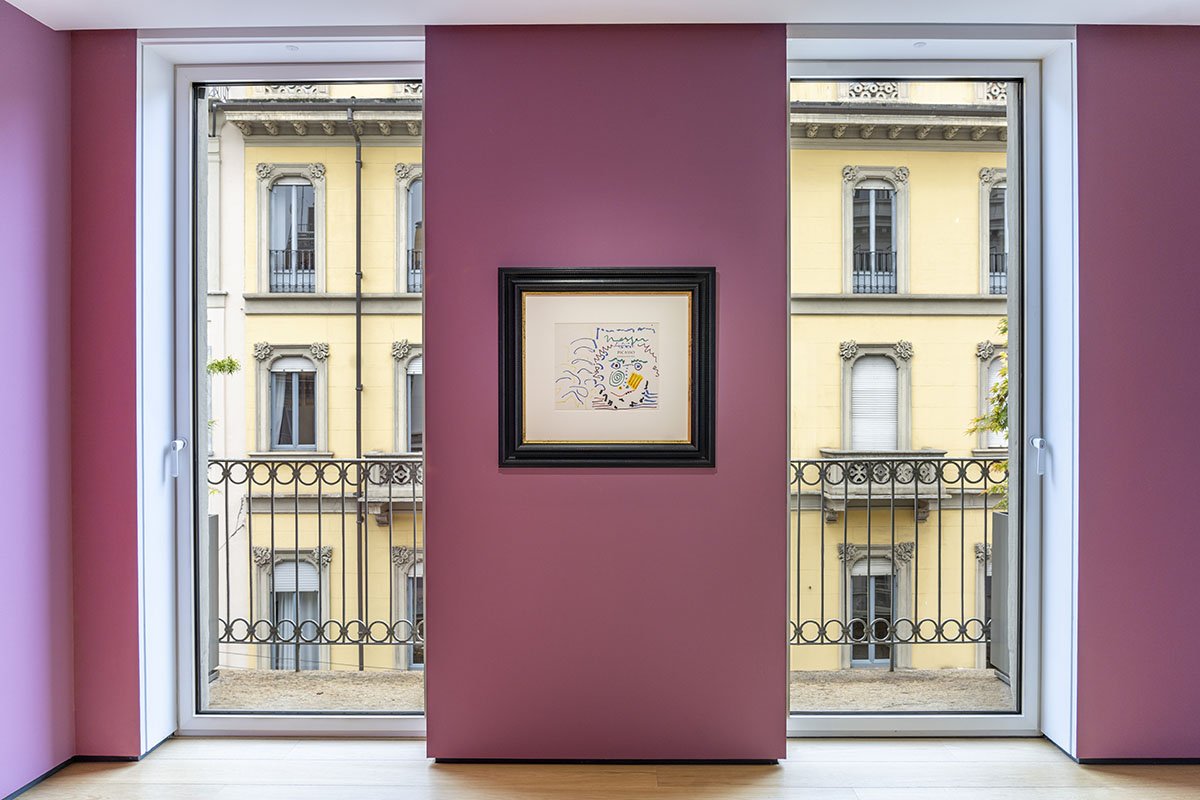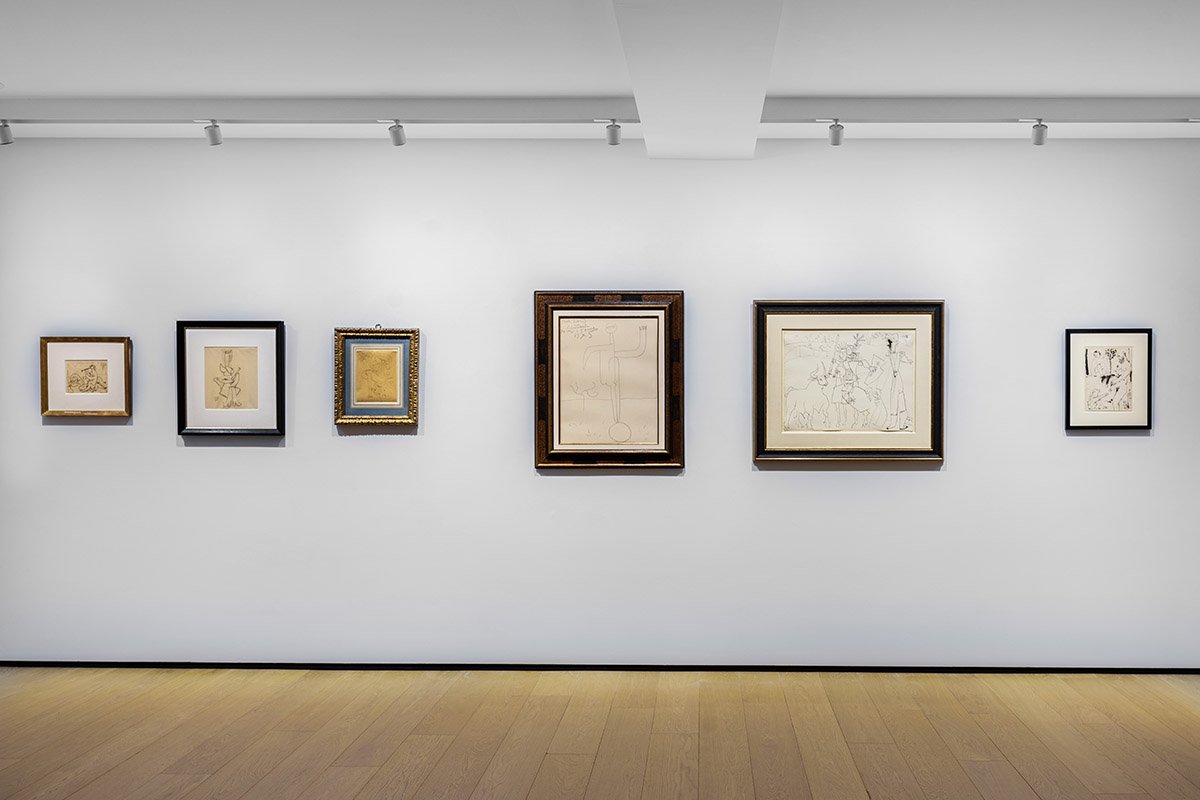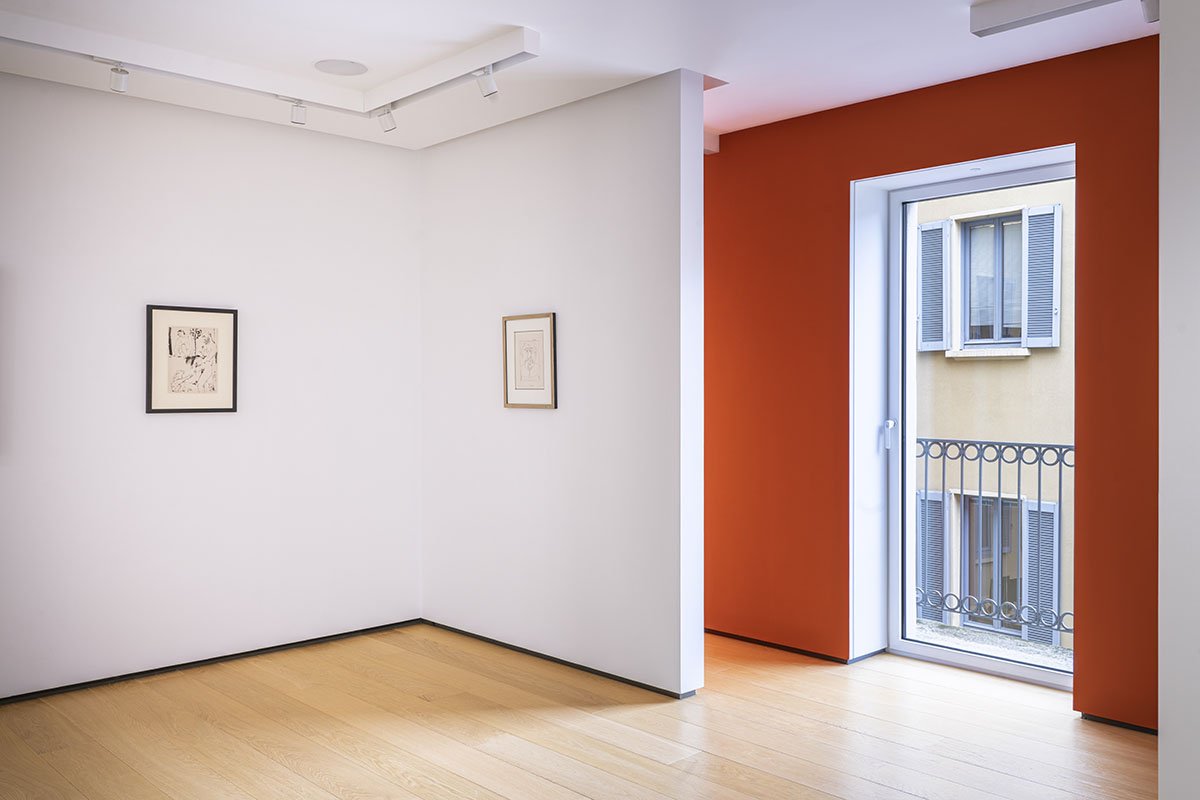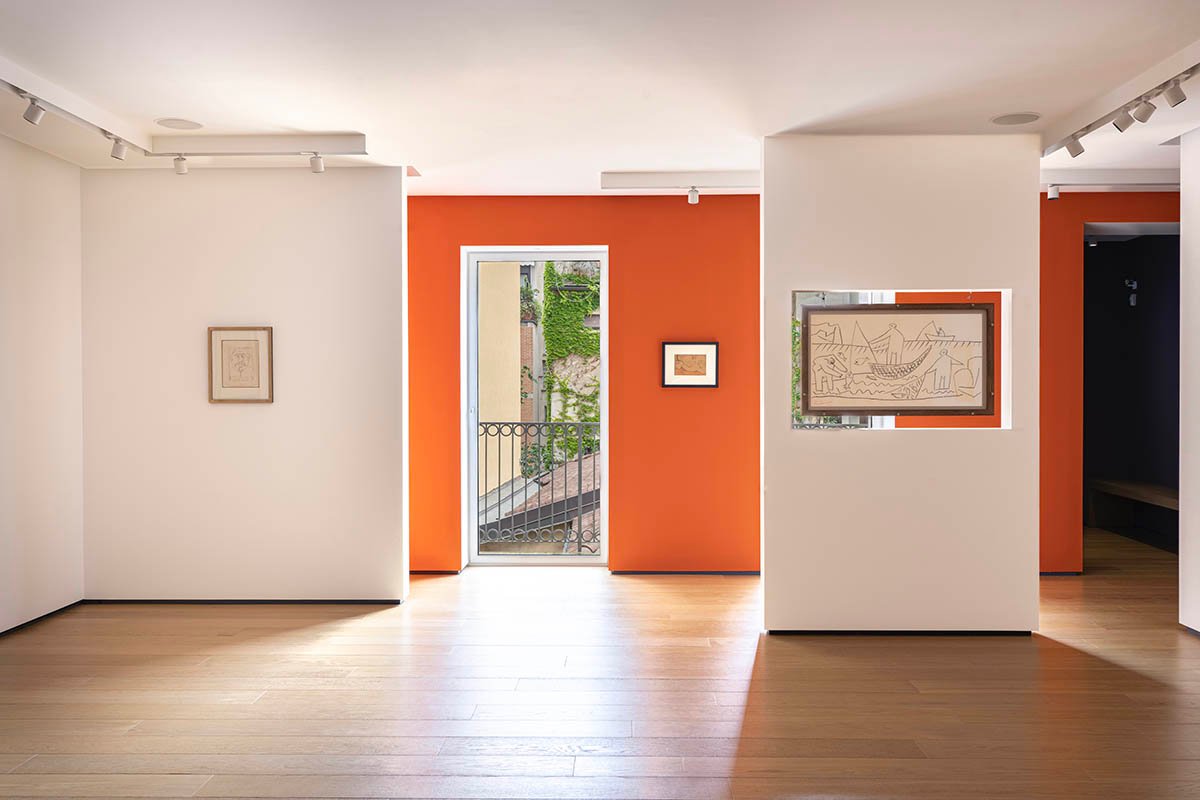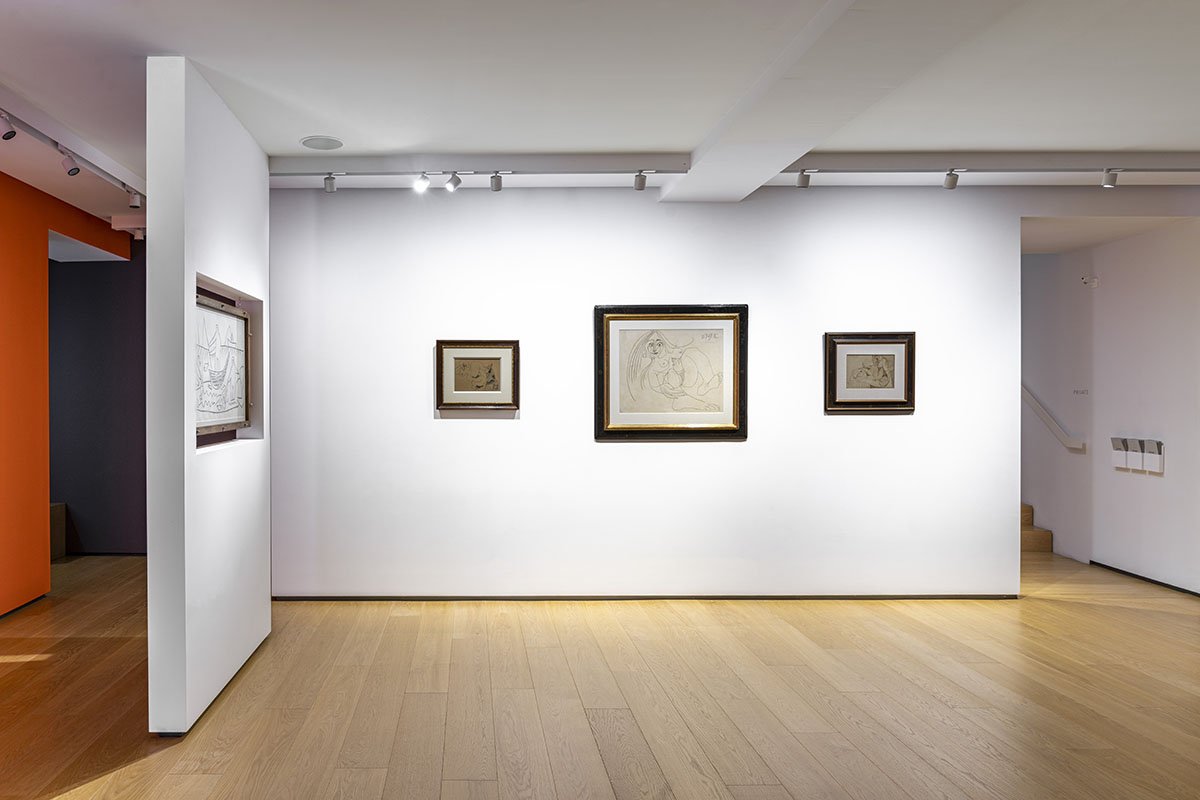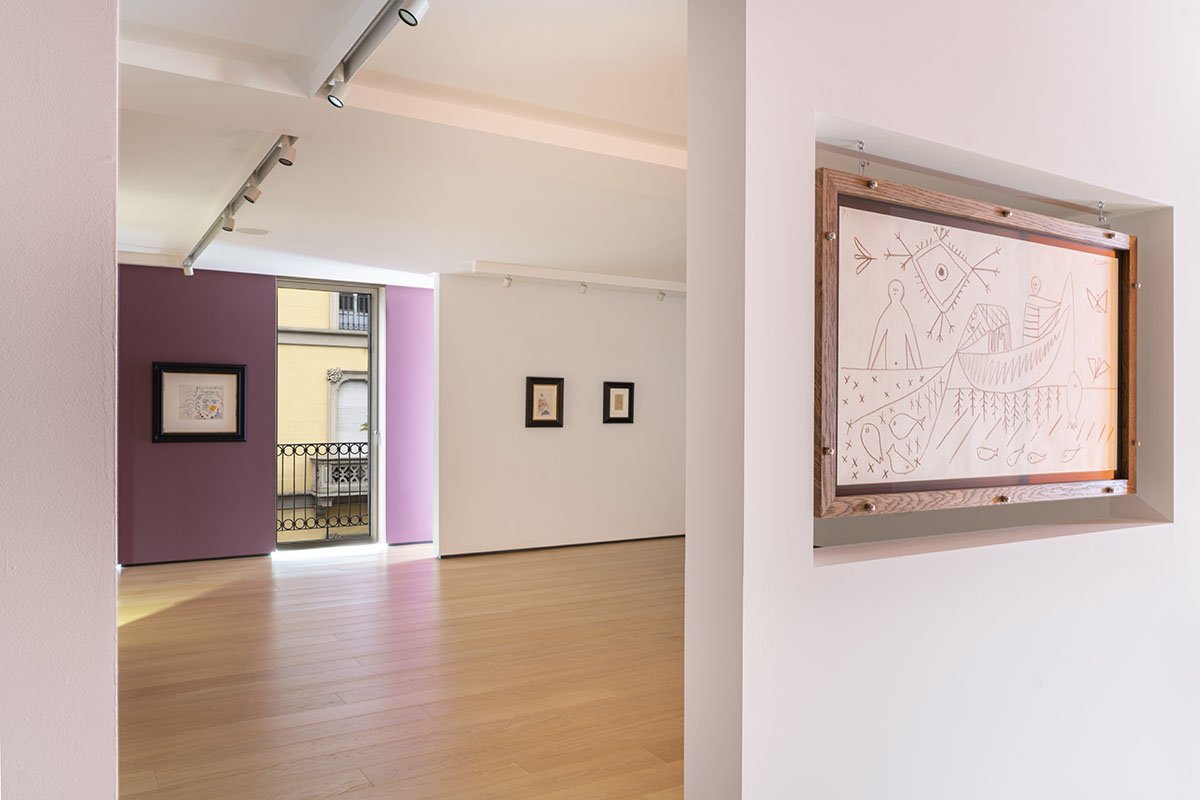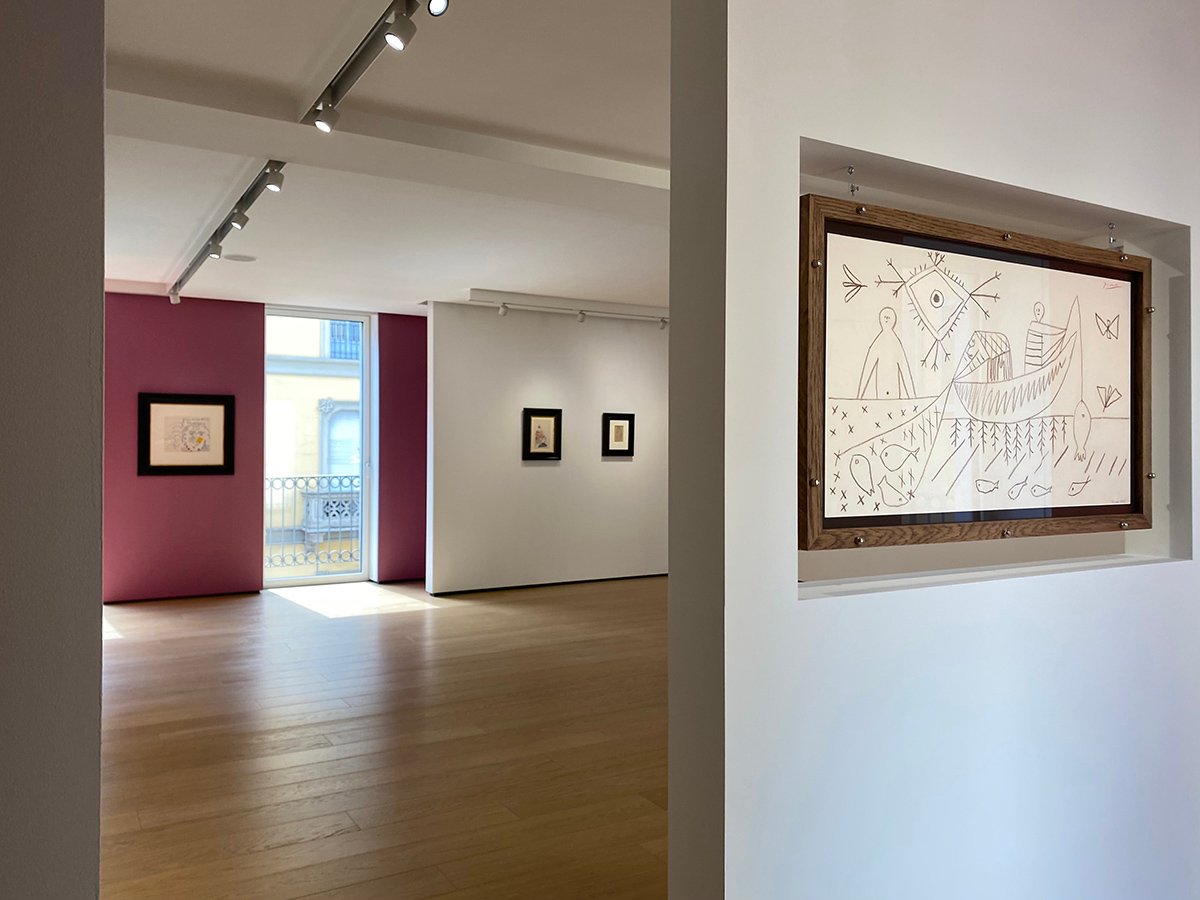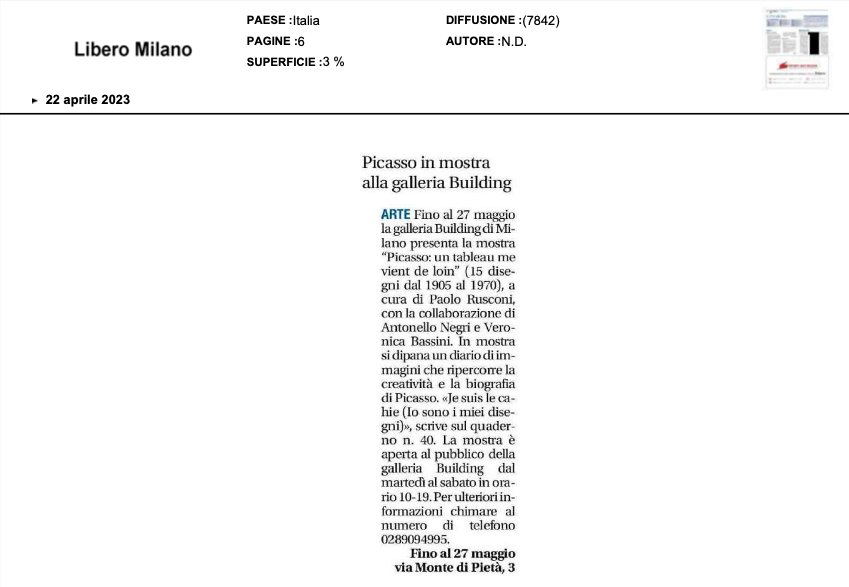Picasso. Un tableau me vient de loin. 15 disegni dal 1905 al 1970
14.04.2023 – 27.05.2023
“Comment voulez-vous qu’un spectateur vive mon tableau comme je l’ai vécu? Un tableau me vient de loin; qui sait de combien loin, je l’ai deviné, je l’ai vu, je l’ai fait, e cependant le lendemain je ne vois pas moi-même ce que j’ai fait.”
“How can a spectator experience my painting as I lived it? A picture comes to me from afar. Who knows how far away! I felt it, I saw it, I painted it and yet, the next day not even I can tell what I made”.
Pablo Picasso, 1935
BUILDING presents BUILDING TERZO PIANO, a space that was born from the desire to explore creativity in all its facets, through original ways not yet experimented in BUILDING and BUILDINGBOX.
From April 14th to May 27th 2023 BUILDING TERZO PIANO presents the exhibition Picasso. A picture comes to me from afar. 15 drawings from 1905 to 1970, curated by Paolo Rusconi, in collaboration with Antonello Negri and Veronica Bassini.
“Un tableau me vient de loin” (“A picture comes to me from afar”). This is what Picasso says to Christian Zervos in a conversation published in 1935 in “Cahiers d’Art” and then in the catalogue of the famous exhibition, Picasso: Forty Years of his Art, curated by Alfred H. Barr Jr. and held at the MoMA in New York in 1939. This extremely evocative and sometimes enigmatic text recalls the artist’s instinct for divining his own creative core. At the same time, it reveals the ever-evolving genetic and open aspect of his work. Drawing is the seismograph of this original tension, the spontaneous recording of the idea, the first externalisation of artistic expression. Drawing is the starting point, a gateway into understanding the genesis of the work.
Therefore, Picasso’s daily drawing practice is the visualisation of a slow, or fast, process from one image to another as a need for communication.
The sheer quantity of drawings produced by Picasso reveals his extraordinary vitality, and the graphic works displayed in this small and precious collection presented take us back to this perspective of immediacy and highly expressive power. The 15 pieces exhibited almost completely cover the life story of the Spanish painter (1881-1973).
It begins with the first drawing, Saltimbanque et jeune fille, from 1905, belonging to his Rose Period, and more specifically to the studies made for the painting Famille de saltimbanques (1905). It then moves on to the large cartoon depicting fishermen at work (1957). This was later engraved with the béton soufflé technique by the sculptor Carl Nesjar, a collaborator and friend to whom the frontispiece Tete d’homme (1965), exhibited here, is dedicated. Then a musketeer’s head from 1969 is exhibited, which is linked to a brief return to the great masters of his early training – Rembrandt, Goya, Velázquez – whom the artist rediscovered and revisited in the last years of his life. Subsequently, there is the small card drawn in felt-tip pen, Nu couché au collier / Deux têtes (1970), dedicated to the musician Norman Granz, a close friend of Picasso’s. This bond is also confirmed by Granz’s decision to name one of his music labels “Pablo Records”.
Thus, the exhibition resembles a diary made up of images that trace the creativity and life story of the painter from Malaga. They show his artistic power and dedication to a daily practice. “Je suis le cahier”: “I am my drawings”, he wrote in No. 40 notebook.
Biographical notes
Pablo Ruiz is born in Malaga in 1881 to Maria Picasso and José Ruiz Blasco. His father is a drawing teacher and curator of the Malaga Museum, and the first person to push the young Pablo towards the visual arts field. In 1891, the Ruiz-Picasso family moves to La Coruña and from 1895, Pablo lives between Madrid and Barcelona where he spends time at the tavern “Els Quatre Gats”, a meeting place for the Spanish avant-garde. In 1900, he decides to adopt his mother’s surname. This is the start of his visits to Paris, where he meets the poet Max Jacob and the art dealer Ambroise Vollard.
Picasso’s early paintings reflect his harsh living conditions: the brushstrokes are influenced by the dark realism of Zurbaràn and early Velàzquez, and his subjects convey the misery of poverty and deprivation. After seeing the work of Van Gogh, Lautrec and Steinlen, Picasso produces a series of works in dark tones: this is his so-called Blue Period.
In 1904, he permanently moves to Paris and into the Bateau-Lavoir studio. Picasso’s studies of the circus and its people (acrobats, harlequins, clowns, tightrope walkers) shiftes the fin-de-siècle desperation of the Blue Period to wards new images – although the palette still tends towards monochrome – and into the Rose Period. His reputation as an artist also changes: he meets Gertrude and Leo Stein, the Russian collector Shukin, Guillaume Apollinaire, and André Salmon.
After this phase, a period of reflection on the painting of Cézanne follows. Additionally, he takes inspiration from Gósol’s Iberian art, as well as from the ethnographic collections of the Trocadéro, in Paris. This is the background when, in 1907, Picasso paints Les demoiselles d’Avignon, the chef-d’œuvre of early 20th century art, “a laboratory, a battlefield of processes and experiments” (Alfred H. Barr Jr., 1939). Afterwards, his friendship with the painter George Braque, the involvement of the poet Guillaume Apollinaire, and the support of the art dealer Daniel H. Kahnweiler, charts the development of the new Cubist language. The first period, monochrome and analytical, is followed by the transition to a synthetic Cubism, in which the artist tends to reconstruct the object.
During the First World War, Picasso stays in Paris; in 1916 he meets Jean Cocteau who asks him to design sets and costumes for the ballet Parade with music by Erik Satie. Picasso produces a series of drawings in the style of Ingres, becoming interested once again in the natural lines of the human body. This return to figurative art is also inspired by the trip he makes to Rome and Florence. The experience of Cubist deconstruction stands alongside his Neoclassical period. In 1932, Christian Zervos publishes the Catalogue Raisonné of his works, while Picasso is approaching Surrealist circles.
He briefly returns to Spain, but he leaves the country at the outbreak of the Civil War. When he is commissioned by the government to create a work that represented the Second Spanish Republic at the 1937 Universal Exhibition in Paris, he denounces the horrors of war with the enormous canvas Guernica. Picasso’s fame is well established, and in 1939 MOMA organises the major exhibition Picasso: Forty Years of his Art, sealing his art overseas as well.
During the Second World War, Picasso stays in France; in November 1944, following the Liberation of Paris, the Salon d’Automne dedicates him a retrospective. In the post-war period, he explores a variety of techniques, from lithography in Fernand Murlot’s atelier, to ceramics, which he begins to produce in 1947 in Vallauris. In that same period, together with the printer Arnéra, he also works on engravings on linoleum, his favourite technique for creating advertising posters for the French city and the artist’s solo exhibitions. In 1953, the major retrospectives are organised in Rome and Milan: Guernica, which was preserved oversea, is exhibited in the Sala delle Cariatidi at the Milanese Palazzo Reale, thanks to the mediation of Attilio Rossi. Consequently, a period of extremely intense productivity and isolation starts. In 1968, he exhibits the Suite 347 at the Louis Leiris Gallery in Paris: 347 engravings that go through all the recurring themes in Picasso’s work, mixing various engraving techniques and styles. Given the moment in which it is produced, the series belongs to the period during which he was looking back on and reinterpreting the great Masters. It is a moment of reflection in which visions of the past and present intertwined, almost a sort of final legacy. Picasso dies in April 1973, at the farm of Notre-Dame-de-Vie in Mougins, his last residence.



